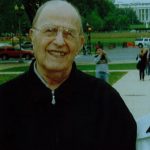 Melvin Stone
Melvin Stone
Melvin Stone, 96, of Portland, Maine, died Nov. 17 at the Cedars retirement community in Portland.
After service in the Army, Stone purchased Rumford (Maine) Publishing Co., which he expanded to publish not only the Rumford Falls Times, but also the former Wilton Times, the then-Westbrook American, and the former Rangeley Record, all in Maine.
Stone later established radio station WLOB-AM in Portland. He eventually owned nine radio stations and Bangor’s Channel 7 TV network, all in Maine. He brokered the sale of dozens of radio stations during his career.
Stone was treasurer of the Maine Press Association and the first president of the New England Press Association.
He retired at age 84.
Stone leaves two sons, Chuck and David, and multiple grandchildren and great-grandchildren.
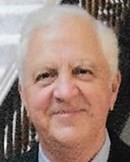 Richard E. Rappoli
Richard E. Rappoli
Richard E. Rappoli, 71, of Cambridge and Rockport, Mass., and formerly of Belmont, Mass., died Oct. 27 at the home of a brother in Rockport.
Rappoli was a reporter and editor at the then-Malden (Mass.) Evening News and a sister newspaper, the former Medford (Mass.) Daily Mercury.
Rappoli leaves three brothers, Peter, Andrew and Robert; two sisters, Caroline and Janice; three nieces; a nephew; two great-nephews.
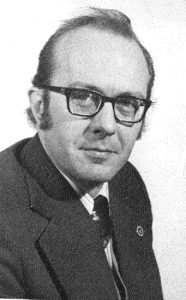 William F. Dougherty
William F. Dougherty
William F. Dougherty, 79, of Hartford, Conn., died Nov. 1 in Hartford.
Dougherty began his career in journalism in the early 1960s, and was the head editorial writer for several newspapers, including The Standard Times of New Bedford, Mass., the former Boston Herald-Traveler, the former Hartford (Conn.) Times, The Telegraph of Nashua, N.H., and the Republican-American of Waterbury, Conn. He also was an editorial page editor and columnist at the Charlottesville (Va.) Daily Progress.
He leaves two daughters, Cynthia and Justine; a son, James; three grandchildren.
Anne Marie (Ridley) Scigliano
Anne Marie (Ridley) Scigliano, 81, of Topsham, Maine, died Nov. 20 at Huntington Common in Kennebunk, Maine.
Scigliano was an award-winning reporter and editor. In 1969, she became the first woman editor for the Lexington (Mass.) Minuteman.
She later became the director of community relations with Symmes Hospital in Arlington, Mass., and in 1984 was named vice president for community relations at Choate Symmes Health Services Inc. In 1989, she became the director of public relations for Winchester (Mass.) Hospital. Scigliano retired in 1995.
Scigliano leaves a sister-in-law, Barbara Jellison; eight nieces and nephews; several grandnieces and grandnephews.
Eleanor Gertrude (Olmstead) McMorrow
Eleanor Gertrude (Olmstead) McMorrow, 91, of Mount Pleasant, S.C., died Nov. 8 in her apartment.
McMorrow wrote Around the Town, a weekly column in the Westwood (Mass.) Press, and became editor of the Westwood Press. She also had been editorial assistant at the Norwood (Mass.) Messenger.
She was a member of Westwood’s Ways and Means and Conservation commissions and was chairwoman of the Westwood Council on Aging.
She leaves three sons, John, Stanley and Philip; six grandchildren; three great-grandchildren.
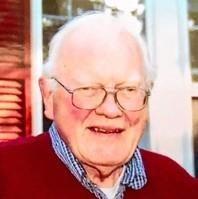 Frank Edward Keane
Frank Edward Keane
Frank Edward Keane, 88, of Yountville, Calif., died Nov. 10.
Keane was a newspaper journalist for nearly 50 years. He began his career as a reporter in upstate New York for The Syracuse Post Standard, the Oneida Daily Dispatch, and The Buffalo Courier Express.
Keane then joined The Providence (R.I) Journal, where he covered politics and general news. During his 32-year association with the Journal, he eventually became night editor.
He was also the head of the union for reporters and editors. He negotiated contracts with the owners and led a strike in 1973.
Before his career ended in 2003, he was a copy editor at the Providence Business News.
He leaves his wife, Rose; five stepchildren, Christina, James, Margaret, Mary and John; six grandchildren; a brother.
Gillian R. Swart
Gillian R. Swart, 64, of Malden, Mass., died unexpectedly Nov. 18 in her home.
Swart was city and feature editor of the Newburyport (Mass.) Current, a freelancer for The Boston Globe, and a writer for the Malden (Mass.) Observer and for the East Village Magazine of Flint, Mich.
Swart leaves her father, Fred; two sisters, Sarah and Helen; a brother, Myron; five half-brothers and sisters.
Andrew Austin Merdek
Andrew Austin Merdek, 67, of Atlanta, Ga., and formerly of Portland, Maine, died Nov. 18.
After graduating from college in 1972, Merdek was a reporter and copy editor for the company that used to own what has become the Portland Press Herald and its sister Sunday newspaper.
Merdek also had been the principal media lawyer for Dow, Lohnes, and Albertson based in Atlanta.
He later became general manager and vice president at the Atlanta Journal and Constitution.
Merdek retired as vice president and general counsel at Cox Enterprises, based in Atlanta.
He leaves his wife, Jeanne; two sons, David and Jonathan; a granddaughter, Abigail; a sister.
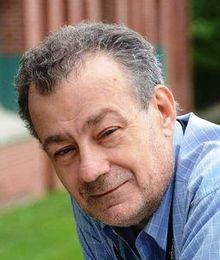 Derek C. Gentile
Derek C. Gentile
Derek C. Gentile, 62, of Great Barrington, Mass., died unexpectedly Nov. 13 at Berkshire Medical Center in Pittsfield, Mass.
Gentile was a reporter and columnist for The Berkshire Eagle of Pittsfield for more than 30 years.
He leaves four sisters, Marybeth, Melanie, Hilary and Karla; three nephews, Kane, Kyle and Nicholas; several cousins.
 Karlene Kelley Hale
Karlene Kelley Hale
Karlene Kelley Hale, 74, of North Monmouth, Maine, died Nov. 22 at Central Maine Medical Center in Lewiston after a long battle with chronic obstructive pulmonary disease.
Hale was a correspondent for the Bangor (Maine) Daily News, covering Eastern Washington County for several years.
Hale later began a 12-year career at the Kennebec Journal of Augusta, Maine, where she wrote mostly statewide and local education stories. She also wrote personal opinion columns there.
After leaving the Kennebec Journal, she became a full-time freelance reporter for the Capital Weekly of Augusta. Her columns and news stories won multiple awards from the Maine Press Association. In 1992, Hale won the Outstanding Media Award from The National Alliance on Mental Illness for her stories about the mentally ill under deinstitutionalization.
Hale wrote three books: “Being There,” about the private lives of the mentally ill; “Hometown Champs,” about a high school basketball team; “Tap Dancing and True Confessions,” a collection of essays about her life growing up in Maine.
She leaves her husband, John, a reporter at the Bangor Daily News when they married; a daughter, Elizabeth; a stepson, Jonathan; a sister.
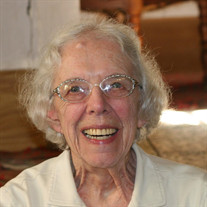 Mildred Cole Péladeau
Mildred Cole Péladeau
Mildred Cole Péladeau, 89, of Readfield, Maine, died Nov. 4 in her home after a long bout with Parkinson’s disease.
Péladeau was a reporter for the then-Lewiston (Maine) Daily Sun, with its state department and its society desk.
Péladeau was a founder of the then-Maine Press, TV and Radio Women. She wrote a book, “Rug Hooking in Maine, 1838-1940,” a 2008 publication that explained the historical context of rug hooking.
Péladeau leaves her husband, Marius, also a former reporter with the Lewiston Daily Sun; a cousin; several nieces and nephews.
Elsa R. Josten
Elsa R. Josten, 96, of Old Saybrook, Conn., died Nov. 20 at Apple Rehab in Old Saybrook.
Josten was a reporter at The Hartford (Conn.) Courant.
She later helped publish weekly newspapers for many years with her husband, Henry, who was the owner and managing editor of Curtis Johnson Publication.
She leaves a daughter, Madeline; three grandchildren, Jay, Caroline and Eric; five great-granddaughters.
George Forsythe
George Forsythe, 93, of Framingham, Mass., died Nov. 24.
Forsythe was a staff reporter the former Boston Evening Traveller and for the New Journal of Norfolk, Va.
He later was an on-air news reporter at the then-WHDH-TV, Channel 5 in Boston.
He leaves three daughters, The Rev. Faith, Anne and Leslie; five grandsons, Timothy, Anthony, Christopher Tolson, Russell, and Christopher Booth; six great-grandchildren.
MacGregor Robinson
MacGregor Robinson, 53, of Norfolk, Conn., died Sept. 4 in his home after being diagnosed with liver cancer in August.
MacGregor had been a reporter for the Lakeville (Conn.) Journal.
He leaves two brothers, Belmore and James; three nieces; five nephews; a brother-in-law; two sisters-in-law.
Daniel M. ‘Dan’ Lynch
Daniel M. “Dan” Lynch, 72, of Plainville, Mass., died Oct. 16 after a brief illness.
Lynch was a columnist with Milford (Mass.) Daily News and the MetroWest Daily News of Framingham, Mass. Lynch retired from owning a contracting business and began writing weekly how-to advice about home improvements.
In 2004, Lynch began writing a weekly column for The Boston Globe called Dear Dan, a question-and-answer column on home repairs.
Lynch leaves a son, Daniel Jr.; a brother, James; six nieces; four nephews.
Ronald Edward Keeler
Ronald Edward Keeler, 84, of Centerville, Mass., and formerly of Redding, Conn., died Nov. 11 at his home.
He was a Linotype machinist at The Advocate of Stamford, Conn.
He leaves a wife, Georgette; two sons, Ronald and Jeffrey; a daughter, Susan; four grandchildren; four great-grandchildren.
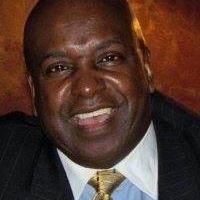 Anthony Randolph ‘Tony’ Jenkins
Anthony Randolph ‘Tony’ Jenkins
Anthony Randolph “Tony” Jenkins, 60, of Boston died Nov. 17 in Boston Medical Center.
Jenkins retired from The Boston Globe after 21 years in its travel division.
He leaves a daughter, Amanda.
Ermina ‘Erma’ (Guiditta) Jacovino
Ermina “Erma” (Guiditta) Jacovino, 96, of Waterbury, Conn., and formerly of Wolcott, Conn., died Nov. 18 at Waterbury Hospital.
Jacovina was a bookkeeper for the Republican American of Waterbury for 17 years.
Jacovina leaves a daughter, Mary Ann; four grandchildren, Robert, Danielle, Vincent and Jeffery; three great-grandchildren.
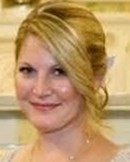 Christina Caturano
Christina Caturano
Christina Caturano, 41, of Concord, Mass., died Nov. 30 after battling breast cancer.
She was a photojournalist for the Boston Herald and The Boston Globe.
She also wrote a cooking blog and children’s literature.
She leaves her husband, Shane; two children, Rhys and Meriel; her parents, Richard and Barbara; a brother.
Michael E. Shea
Michael E. Shea, 58, of Holyoke, Mass., died Nov. 2.
He was involved with transportation and delivery for The Republican of Springfield, Mass.
 Robert J. Kmon Sr.
Robert J. Kmon Sr.
Robert J. Kmon Sr., 51, of Coventry, R.I., died Nov. 10 at Philip Hulitar Hospice Center in Providence, R.I.
Kmon was a pressman for several newspaper companies.
He leaves his wife, Lory; a son, Robert; two daughters, Sara and Amanda; his biological father, Ernest; two brothers; a sister.
The obituaries were written, at least in part, from published reports by Bulletin correspondents Ajoa Addae, Nadine El-Bawab, Angela Gomba, Nico Hall, Joshua Leaston, Kaitlyn Mangelinkx, Monica Nair, Rebekah Patton, Casey Rochette and Cayley Ross, undergraduate students at Northeastern University.


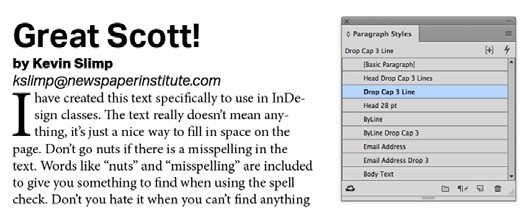
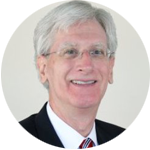

 Jeff Otterbein has retired as sports editor of The Hartford Courant after 27 years. Dan Brechlin has been named to replace Otterbein as sports editor. Otterbein began in the Courant sports department in 1985 and has been sports editor since 1990. Otterbein has won the Associated Press Sports Editors Triple Crown for Top 10 daily section, Sunday section and special section four years in a row. Before his time at the C
Jeff Otterbein has retired as sports editor of The Hartford Courant after 27 years. Dan Brechlin has been named to replace Otterbein as sports editor. Otterbein began in the Courant sports department in 1985 and has been sports editor since 1990. Otterbein has won the Associated Press Sports Editors Triple Crown for Top 10 daily section, Sunday section and special section four years in a row. Before his time at the C ourant, Otterbein was assistant sports editor at the Sun Sentinel of Fort Lauderdale, Fla. Brechlin was previously the deputy metro editor for the Hartford Courant. Before joining the Courant, he was city editor for the Record-Journal of Meriden for six years. He was a reporter there until 2014 and then city editor from 2014 until 2016. He also has been a reporter for the Southington Citizen and the Plainville Citizen.
ourant, Otterbein was assistant sports editor at the Sun Sentinel of Fort Lauderdale, Fla. Brechlin was previously the deputy metro editor for the Hartford Courant. Before joining the Courant, he was city editor for the Record-Journal of Meriden for six years. He was a reporter there until 2014 and then city editor from 2014 until 2016. He also has been a reporter for the Southington Citizen and the Plainville Citizen.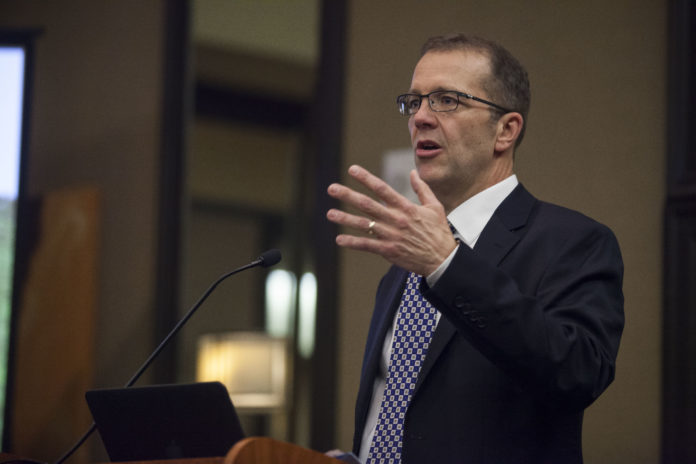
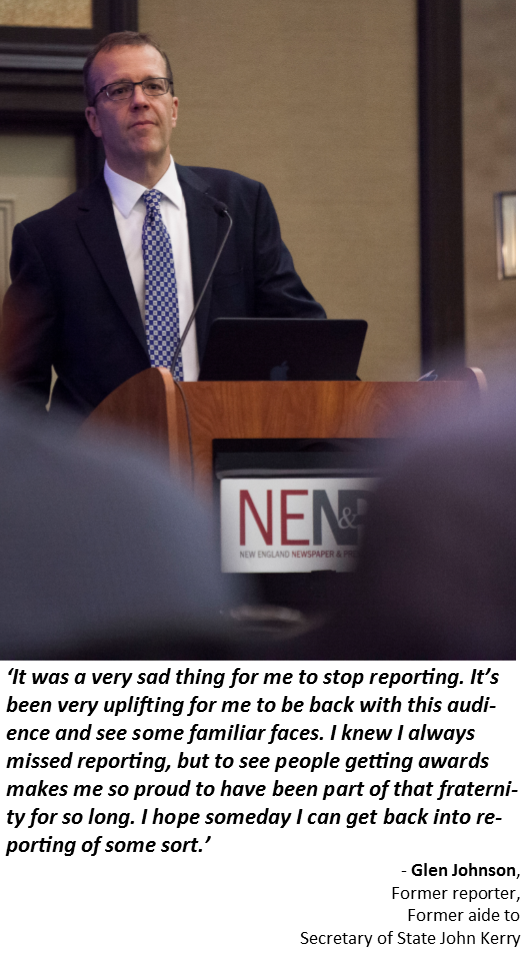
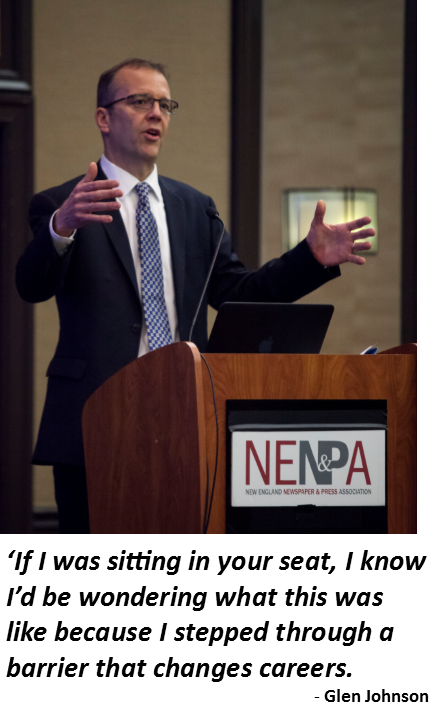
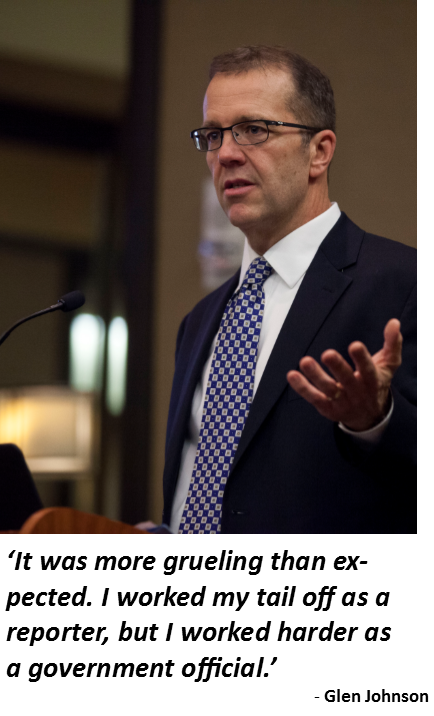
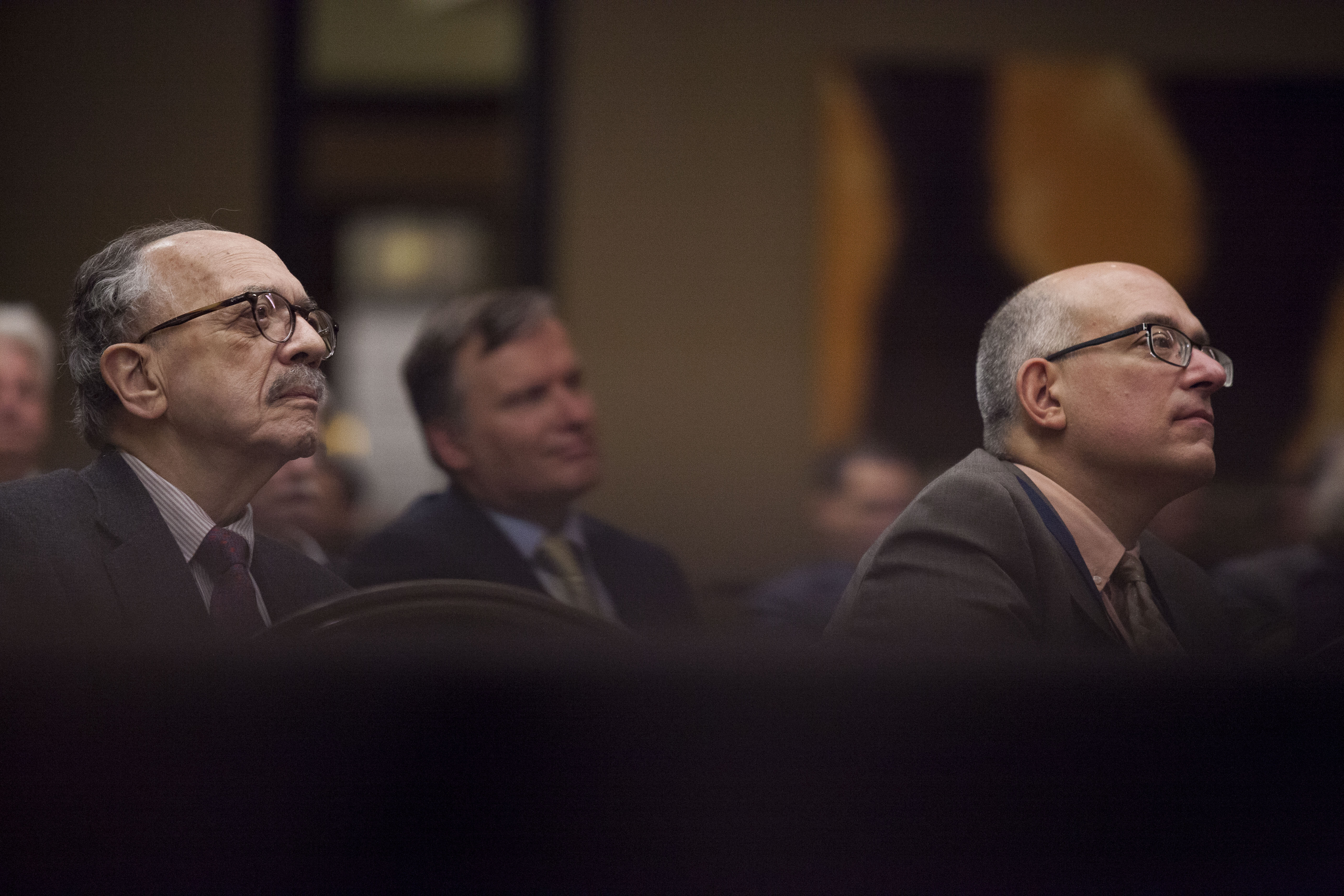 Members of the audience at Glen Johnson’s talk listen intently
Members of the audience at Glen Johnson’s talk listen intently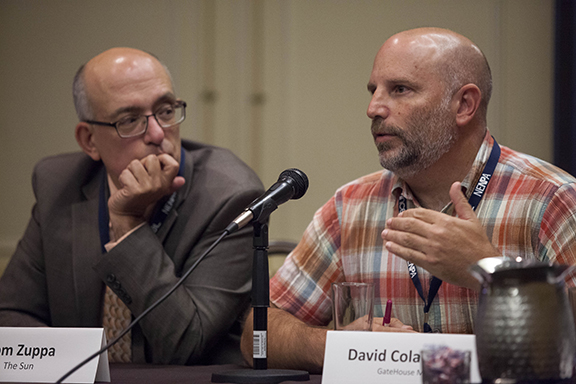
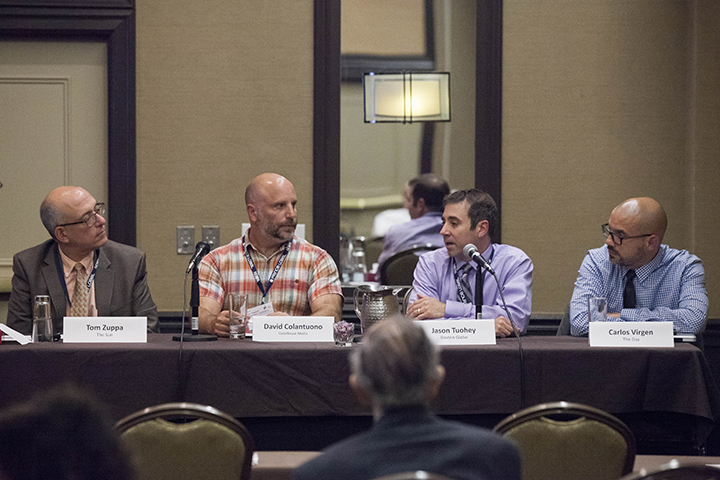 The four panelists at the discussion on using analytics in news decisions, from left: Tom Zuppa, David Colantuono, Jason Tuohey and Carlos Virgen.
The four panelists at the discussion on using analytics in news decisions, from left: Tom Zuppa, David Colantuono, Jason Tuohey and Carlos Virgen.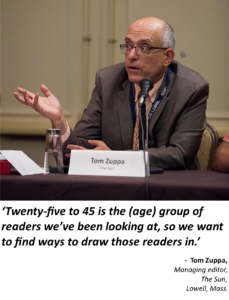

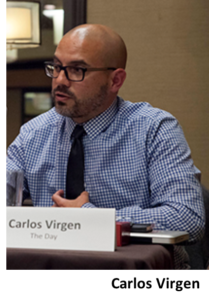
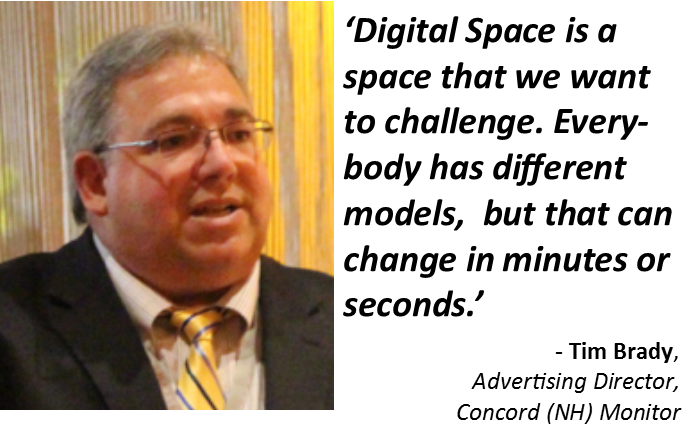



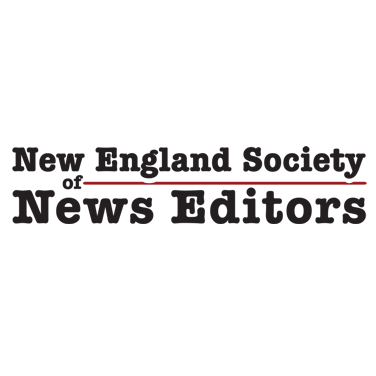
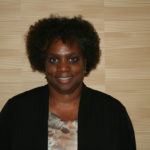
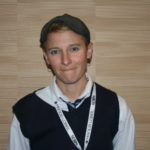


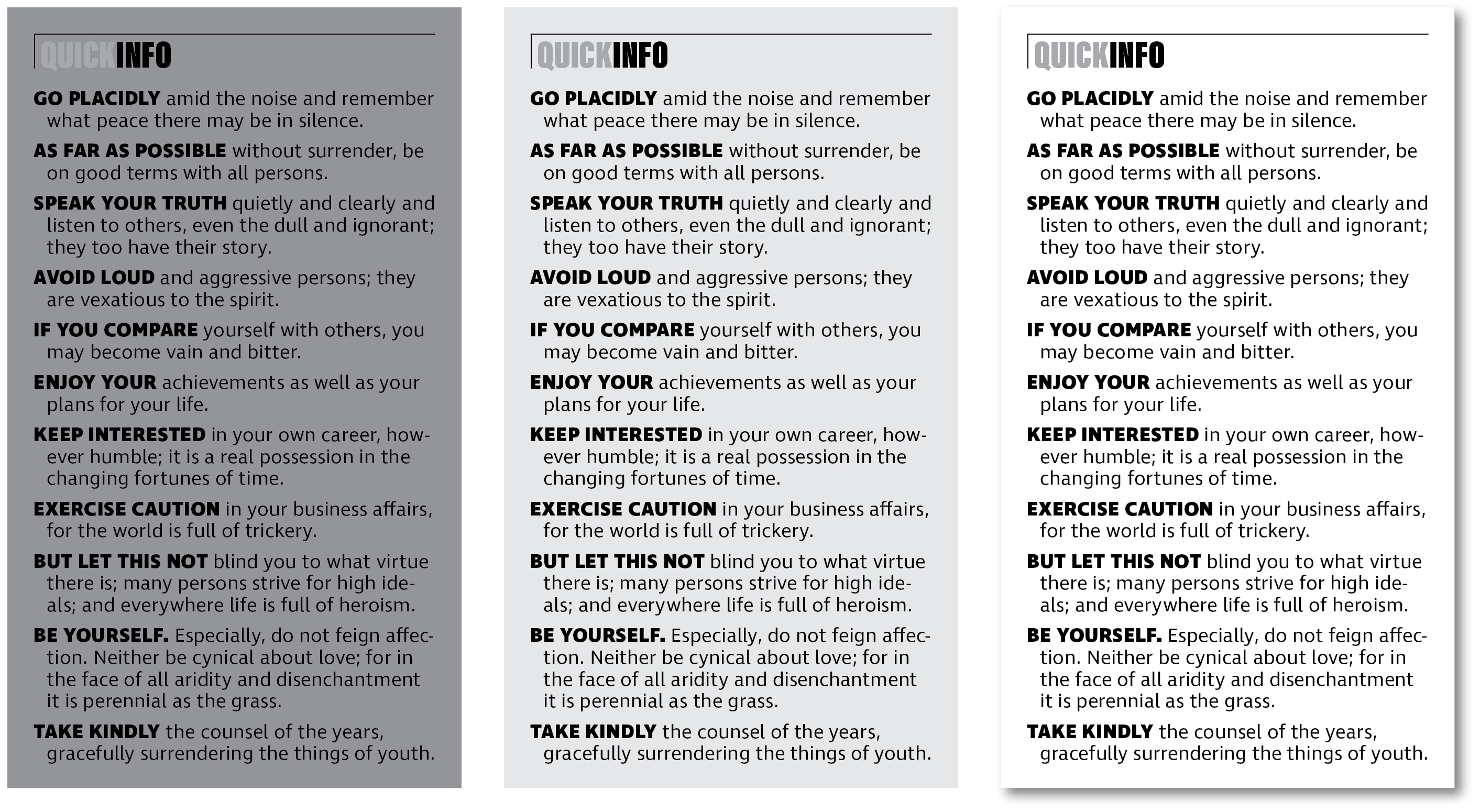
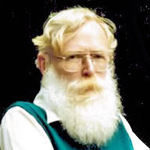 David Norman Walsh
David Norman Walsh Lois Marston Duquette
Lois Marston Duquette  Calhoun J. ‘Cal’ Killeen, Jr.
Calhoun J. ‘Cal’ Killeen, Jr.  Michael P. Saucier
Michael P. Saucier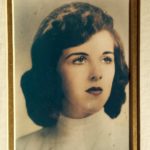 Rosemary A. Hanson
Rosemary A. Hanson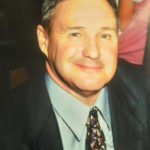
 Nancy Hess Spencer
Nancy Hess Spencer Virginia Campbell Downs
Virginia Campbell Downs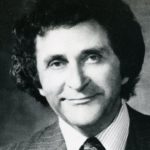 Ray Barron
Ray Barron Charles Turek Robinson
Charles Turek Robinson 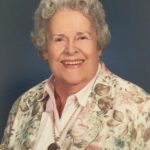 Patricia Mulford Ahrens
Patricia Mulford Ahrens Natalie Wallace Murphy
Natalie Wallace Murphy